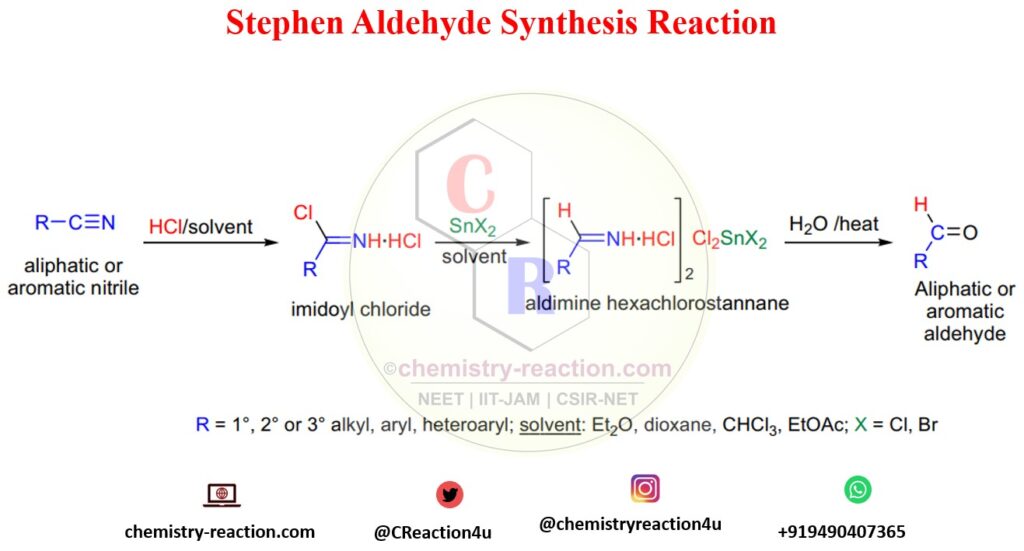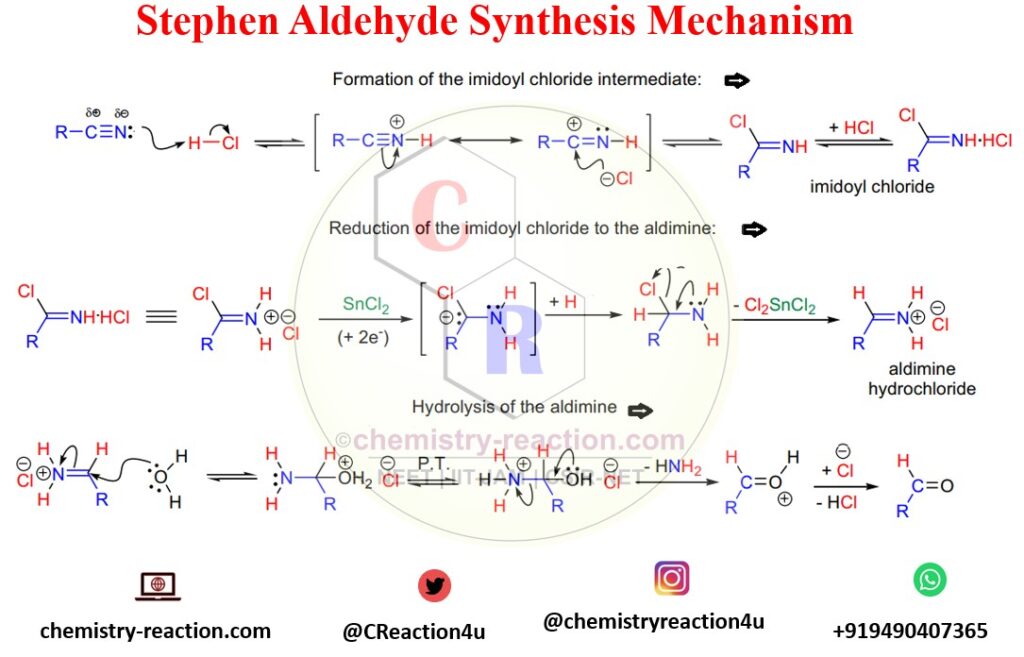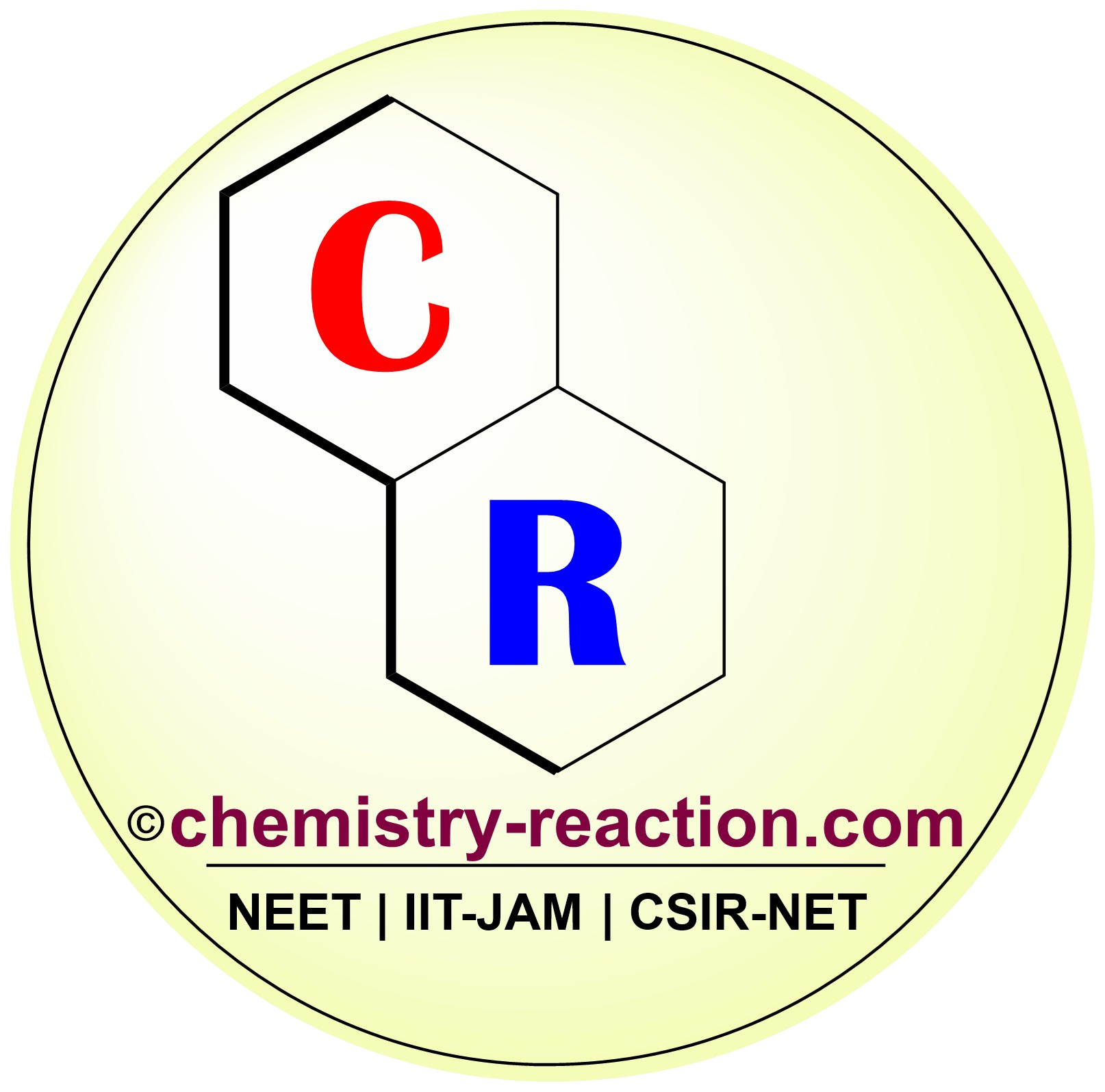Stephen Reduction Reaction is also known as Stephen aldehyde synthesis or Stephen reaction in organic chemistry. here is the Stephen Aldehyde Synthesis Mechanism and Application.
here aliphatic or aromatic nitrile is converted to imidoyl chloride or uses of sulphuric acid by using hydrochloric acid and further to aliphatic or aromatic aldehyde.

Sandmeyer Reaction: Definition| Mechanism| Example| Application
Table of Page Contents
Mechanism
Stephen Aldehyde Synthesis Mechanism follows the three mechanism steps. Stephen Aldehyde Synthesis Mechanism and Application
- Formation of the imidoyl chloride intermediate
- Reduction of the imidoyl chloride to the aldimine
- Hydrolysis of the aldimine to the corresponding aldehyde with water

Applications of:
These are the application of Stephen Aldehyde Synthesis,
stephen reaction is hydrolysis of



Related Reaction:
- Vilsmeier-Haack formylation
- Reimer-Tiemann reation
- Gatterman formylation
- Gatterman-Koch formylation
References :
- https://www.toppr.com/ask/question/what-is-stephens-reaction/
My name is Pradip Sanjay W. I’m an organic chemist originally from Maharashtra, India. I have qualified UGC NET-JRF, GATE in chemical sciences and MH-SET exam for assistant professor. I’m currently pursuing my Ph.D. in organic chemistry at the Indian Institute of Technology Hyderabad, India.

1 thought on “Stephen Aldehyde Synthesis, Mechanism and Application”